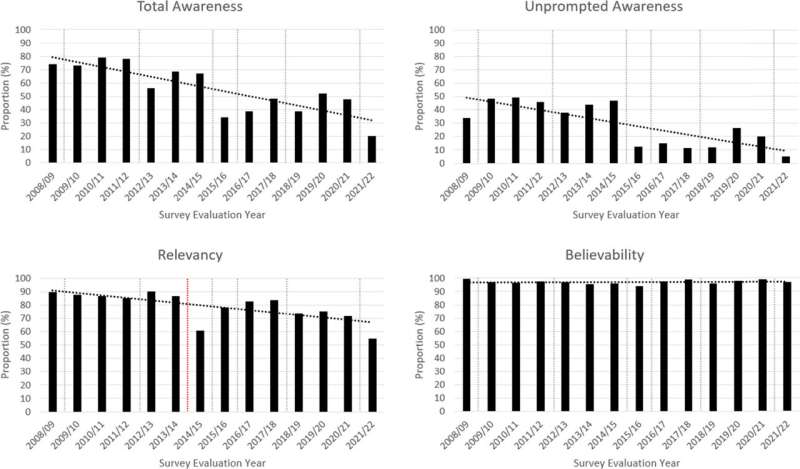This article has been reviewed according to Science X's editorial process and policies. Editors have highlighted the following attributes while ensuring the content's credibility:
fact-checked
proofread
Number of 10- to 19-year-old Australians with severe sunburn more than doubles in ten years

Cancer Council WA is urging the Cook government to invest $2.2 million per year into the prevention of skin cancer, as new data reveals the number of West Australians treated at hospital emergency departments for severe sunburn has more than doubled since 2014.
Cancer Council WA's Cancer Prevention and Research Manager, Melissa Ledger, said the data showed the need for urgent action by the WA government to give skin cancer the priority it deserves.
"In 2023, 107 young West Aussies aged between 10 and 19 years sought medical help for sunburn in emergency departments," Ledger said.
"Young people are our greatest asset; they spend a lot of time outdoors and there is not enough being done to help them be more SunSmart.
"The WA Government must create an environment that supports young people to be SunSmart.
"We need to see government supporting high schools and sporting clubs to develop minimum SunSmart policies and standards across the State, but we also need shade included as part of the planning requirements for all new public building and infrastructure projects including schools, and innovative media campaigns that specifically target young people.
"The damage caused in the teenage years significantly increases the risks of skin cancer in later life."
Ledger said a recent study revealed that over the past few years, SunSmart advertisements and campaigns may not have reached their target audiences because of the number of platforms needed to advertise on, and Cancer Council WA simply couldn't afford it.
"We need to see $2.2 million each year invested to build on the work of the last 40 years, so these worrying numbers don't continue to rise," she said.
"Most ED presentations occur during December and January when UV levels are extreme across WA. These numbers are just the tip of the iceberg; we know most people don't see their doctor or go to ED when they get sunburnt.
"This data shows that urgent action is needed to ensure West Australians are protected from the damaging UV radiation that is present in WA almost all year round.
"We can't be complacent; we need to see a coordinated and comprehensive approach to reducing over exposure to UV. With an annual cost to our WA health system of $172 million for skin cancer treatment, now is the time for action.
"We need all West Australians, especially our young people, to be SunSmart. Creating these opportunities at school, home and in the community is easy with a comprehensive state-wide strategy to prevent skin cancer.
"This data is a great reminder that the greatest risk factor for skin cancer is overexposure to UV and this is largely preventable by properly protecting our community from the sun."
The findings are published in the Health Promotion Journal of Australia.
More information: Ying Ru Feng et al, Evaluation of the awareness of Western Australian SunSmart campaigns between 2008 and 2022, Health Promotion Journal of Australia (2024). DOI: 10.1002/hpja.851


















